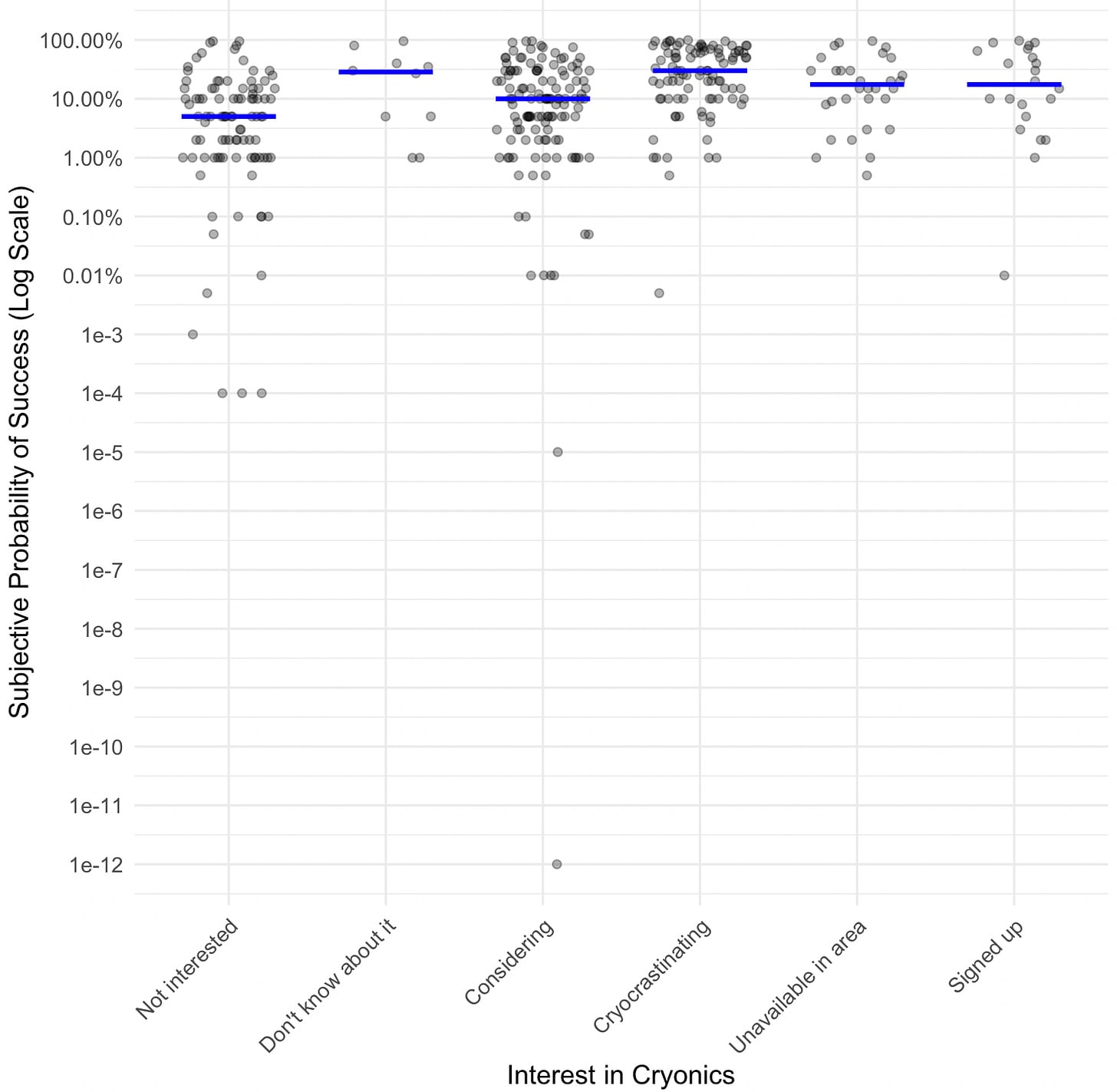The Less Wrong 2023 survey results are out. As usual, it includes some questions about cryonics. One is about what people’s level of interest in cryonics is (not interested, considering, cryocrastinating, signed up, etc.). Another asks about people’s subjective probability of successful restoration to life in the future, conditional on there not being a global catastrophe destroying civilization before then. This is also known as p(success). I thought it might be interesting to plot these (with the subjective probability estimates on a log scale, of course):

It is true that people who are more interested tend to give higher subjective probability estimates of success (median probability estimates: signed up = 17.5%, cryocrastinating = 30%, considering = 10%, not interested = 5%). But the difference is not very large. There must be other factors that are much more important than p(success) estimates in mediating whether someone is interested in signing up for cryonics and/or actually goes through with it.
This is crossposted from my blog's links post for the month, available here. I only posted this part because I thought it was less likely that people would be interested in the others.